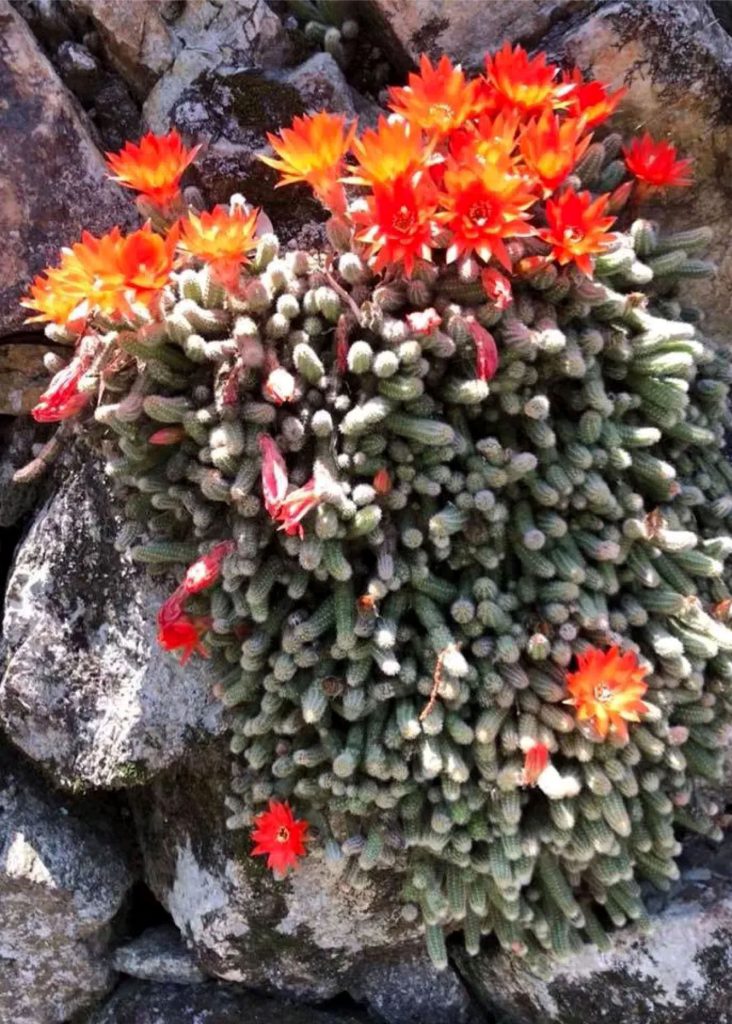
A village where more than 50% of the population became elderly people aged 65 or over due to depopulation, declining birthrate, and aging population was once called a “marginal village”. However, it is not a very good word. Currently, official documents such as the Ministry of Internal Affairs and Communications and the Ministry of Land, Infrastructure, Transport and Tourism seem to use expressions such as “villages with strict basic conditions” and “villages that are difficult to maintain.” “Villages with strict basic conditions” are not limited to remote mountainous areas, and there are similar settlements in the middle of the city. From the 1960s to the 1970s, large-scale housing estates built in cities across the country are now “villages with strict basic conditions.” The Chamaecereus taken in the photo was also taken in a “village with strict basic conditions” in the hilly section, Osaka. A splendid Chamaecereus bloomed again this year in the stone wall of an abandoned house that left a splendid appearance. By the way, Chamaecereus is called peanut cactus in English-speaking countries, and it is a mysterious cactus that has not been found to grow naturally for some reason.
過疎化や少子・高齢化が進み、人口の50%以上が65歳以上の高齢者となった集落をひと頃「限界集落」と呼んでいました。しかしあまり響きの良い言葉ではありません。現在では、総務省や国土交通省などの公式文書では、「基礎的条件の厳しい集落」とか「維持が困難な集落」といったといった表現が用いられている様です。「基礎的条件の厳しい集落」はなにも山間僻地に限ったことではなく、都会のど真ん中でも似たような集落があります。1960年代から1970年代にかけて、全国の都会に作られた大型団地が今や「基礎的条件の厳しい集落」になっているそうです。写真で撮ったサボテンのビャクダンも大阪の山手にある「基礎的条件の厳しい集落」で撮ったものです。立派な佇まいの面影を残した廃屋の石垣に、今年も見事なビャクダンが咲いていました。ちなみに、ビャクダンは英語圏ではピーナッツサボテンと呼ばれていて、いまだになぜか自生しているのを発見されてない謎のサボテンです。
